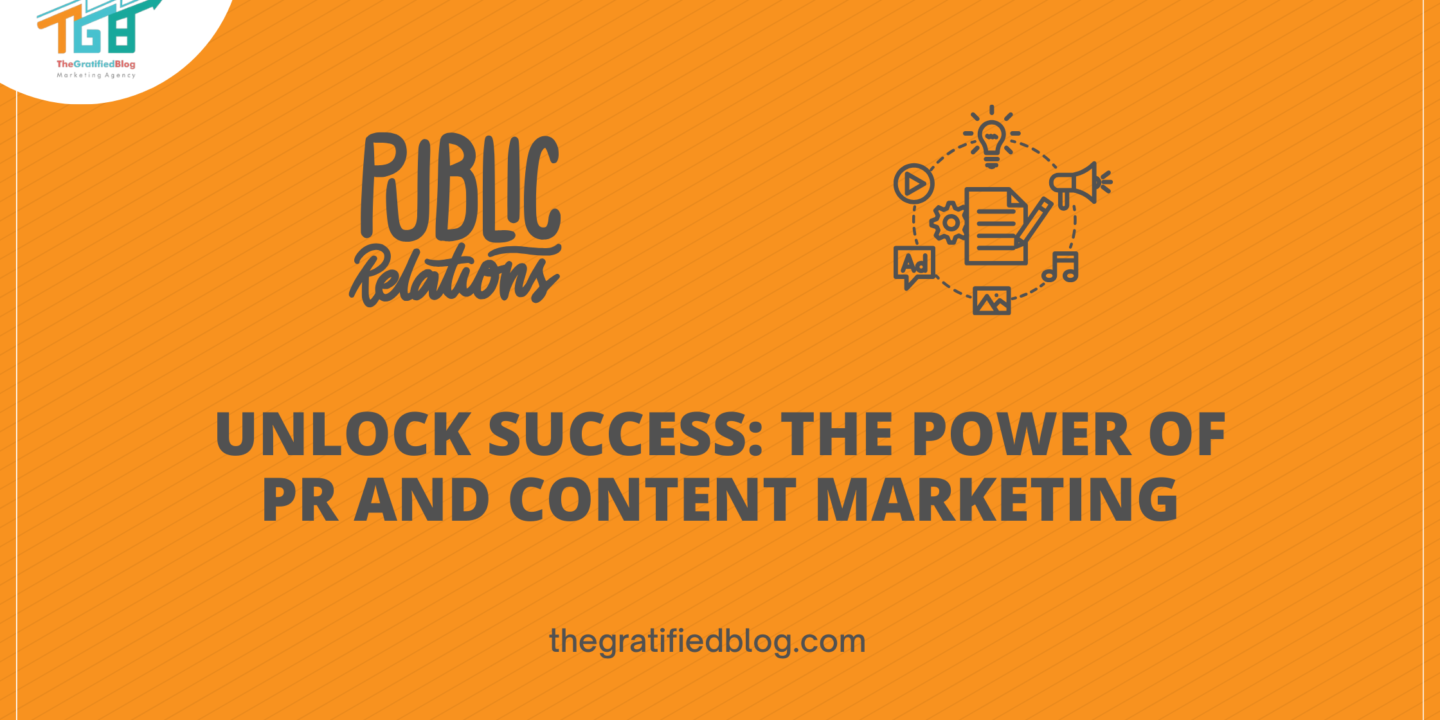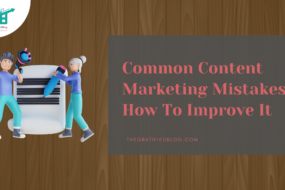
In today’s digital age, the symbiotic relationship between PR and content marketing is a cornerstone of successful brand communication strategies. As businesses navigate an increasingly competitive landscape, understanding the intricate interplay between these two pillars of marketing is essential for maintaining relevance, credibility, and visibility in the eyes of consumers.
In this blog, we delve into the dynamic fusion of PR and content marketing, exploring how their integration amplifies brand messaging and drives tangible results in engagement, reputation management, and overall business growth.
Join us on a journey to uncover the transformative power of PR and content marketing in shaping the modern marketing landscape.
So, let’s get started:
Understanding PR And Content Marketing
PR (Public Relations)
Public Relations (PR) encompasses the strategic communication management between an organization and its various stakeholders, including customers, investors, employees, and the general public.
PR aims to cultivate and maintain a favorable public image for the organization by leveraging various channels and tactics, such as media relations, press releases, events, and community engagement. It involves proactive efforts to shape public perception, manage crises, and build strong relationships that enhance brand reputation and credibility.
Objectives and Goals of PR Campaigns:
- Enhancing Brand Reputation: One of the primary objectives of PR campaigns is to build and maintain a positive brand reputation. PR professionals strive to influence public perception by crafting strategic communication strategies strategic communication efforts, including media relations, crisis management, and community engagement. PR campaigns aim to position the brand as a reputable and trusted authority in its industry by fostering trust, credibility, and goodwill.
- Generating Media Coverage: Another goal of PR campaigns is to secure media coverage in various outlets, including newspapers, magazines, websites, and television programs. PR professionals seek to garner positive publicity and increase the brand’s visibility among target audiences by proactively pitching stories, press releases, and media alerts to journalists and influencers. Media coverage can help raise awareness, drive traffic, and establish the brand as a thought leader.
- Managing Crises and Mitigating Risks: PR campaigns also focus on managing crises and mitigating risks that may threaten the reputation or credibility of the brand. Whether addressing negative publicity, handling customer complaints, or responding to emergencies, PR professionals safeguard the brand’s image and maintain public trust. By implementing effective crisis communication strategies, PR campaigns aim to minimize damage, restore confidence, and protect the brand’s long-term reputation.
Content Marketing
Content marketing involves creating, distributing, and promoting valuable, pertinent, and regular content to attract a specific audience. Unlike conventional advertising, content marketing prioritizes furnishing informative rather than promotional material. Informative, entertaining, or educational content that addresses the needs and interests of consumers.
Content marketing aims to establish trust, build brand awareness, and drive profitable customer action through Blog entries, articles, videos, social media updates, and other formats. It emphasizes storytelling and authenticity, delivering value to the audience, nurturing long-term relationships, and fostering brand loyalty.
Goals and Objectives of Content Marketing:
- Building Brand Awareness: A key objective of content One of the main aims of marketing is to boost brand recognition and presence among target audiences. By creating and disseminating valuable, informative, and captivating content across Different platforms, including blogs, social media networks, and email newsletters, content marketers aim to attract the interest of prospective customers and acquaint them with the brand. Building brand awareness lays the foundation for further engagement and conversion.
- Driving Website Traffic and Engagement: Content marketing also aims to drive traffic to the brand’s website and increase user engagement with its online properties. By producing high-quality content that addresses target audiences’ needs, interests, and pain points, content marketers can attract organic search traffic, encourage social sharing, and prompt visitors to explore additional pages and resources on the website. Increasing website traffic and engagement boosts brand visibility and creates lead generation and conversion opportunities.
- Establishing Thought Leadership: Another objective of content marketing is establishing the brand as a thought leader and authority in its industry or niche. By producing insightful, original, and well-researched content that offers unique perspectives, expert insights, and practical advice, content marketers can position the brand as a trusted source of information and expertise. Thought leadership helps build credibility, earn the trust of target audiences, and differentiate the brand from competitors, ultimately driving brand loyalty and advocacy.
Now that you know the basics of PR and Content marketing, let’s dive into the Intersection of them
The Intersection: PR And Content Marketing

Synergies between PR and Content Marketing:
PR and content marketing may seem like different beasts, but they work hand in hand to achieve common goals. Imagine PR as the megaphone that spreads your message far and wide, while content marketing is the substance that makes people stop and listen. They create a powerful force that strengthens your brand’s presence and reputation.
For instance, PR helps shape your brand’s narrative by securing media coverage, managing crises, and building relationships with key stakeholders. Conversely, content marketing provides the substance for these narratives through engaging blog posts, informative videos, and captivating social media content. By aligning PR efforts with content marketing strategies, You can guarantee the consistency of your message across all channels, reinforcing brand values and fostering trust with your audience.
Together, PR and content marketing form a symbiotic relationship that amplifies the impact of each other’s efforts. PR lends credibility and authority to your content, while content marketing provides the storytelling and depth that captivates audiences. By leveraging the synergies between PR and content marketing, brands can create a cohesive narrative that strikes a chord with their intended audience and fosters significant interaction.
How Content Marketing Enhances PR Efforts:
Content marketing acts as a force multiplier for PR efforts, extending the reach and impact of your brand’s messaging. Unlike traditional PR tactics that rely heavily on press releases and media pitches, content marketing allows brands to take control of their narrative and connect directly with their audience.
For example, by creating compelling blog posts, informative infographics, or entertaining videos, brands can showcase their expertise, share valuable insights, and engage with their audience more personally. This helps to humanize the brand and position it as a thought leader in its industry, garnering attention and credibility from both media outlets and consumers.
Moreover, content marketing provides PR teams with a steady stream of fresh, relevant content to share with journalists, influencers, and other critical stakeholders. Whether a well-crafted blog post or a visually stunning infographic, compelling content increases the likelihood of media coverage and enhances the brand’s visibility in the digital landscape.
Leveraging PR to Amplify Content Distribution:
PR plays a critical role in boosting the distribution of content marketing assets, ensuring that it extends its audience reach and achieves maximum influence. By leveraging media relationships, industry partnerships, and strategic alliances, PR professionals can secure placements and mentions for branded content in high-profile publications, websites, and social media channels.
For instance, a well-timed press release or media pitch can attract the attention of journalists and influencers, leading to earned media coverage that extends the reach of your content far beyond your channels. By tapping into the credibility and authority of third-party media outlets, brands can amplify the visibility and credibility of their content, reaching new audiences and driving traffic back to their platforms.
Furthermore, PR efforts can also facilitate collaboration opportunities with industry influencers and thought leaders, who can help amplify the reach and impact of your content through their networks and channels. By strategically aligning PR and content marketing efforts, Brands can initiate a cascading effect that expands the reach and resonance of their messaging, driving greater brand awareness and engagement across multiple touchpoints.
Conclusion
Now that you’re familiar with the intricacies of PR and content marketing, it’s evident how their integration forms a powerful strategy for modern brands. By synergizing these approaches, brands can effectively shape their narrative, engage audiences, and drive business success.
If you still have any questions related to the blog, then feel free to leave them in the comments section. We will be happy to answer you.
Thanks for reading 🙂








No Comments